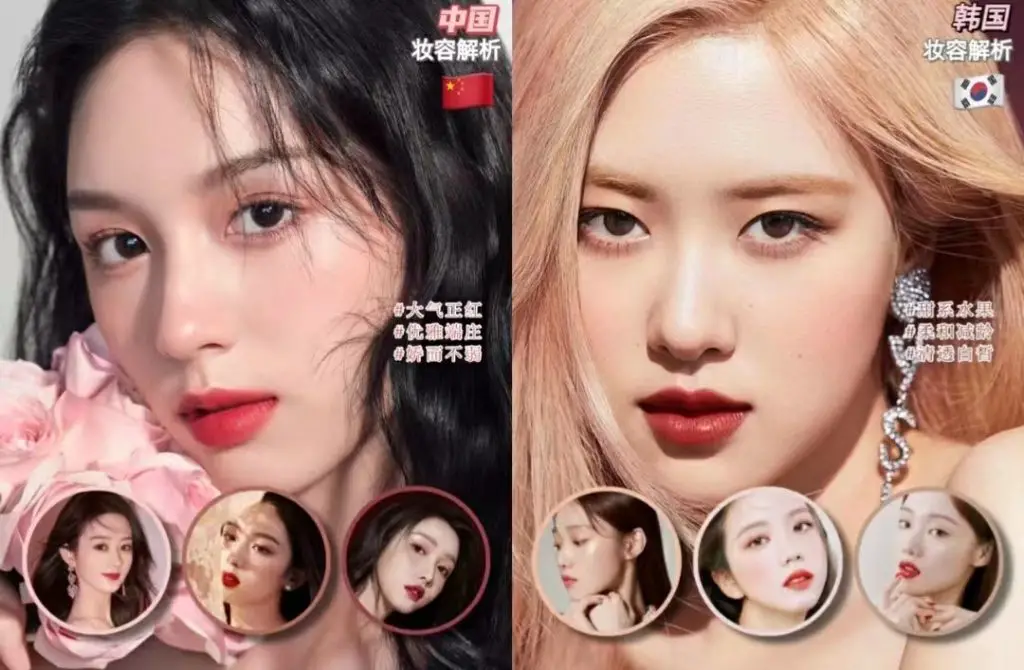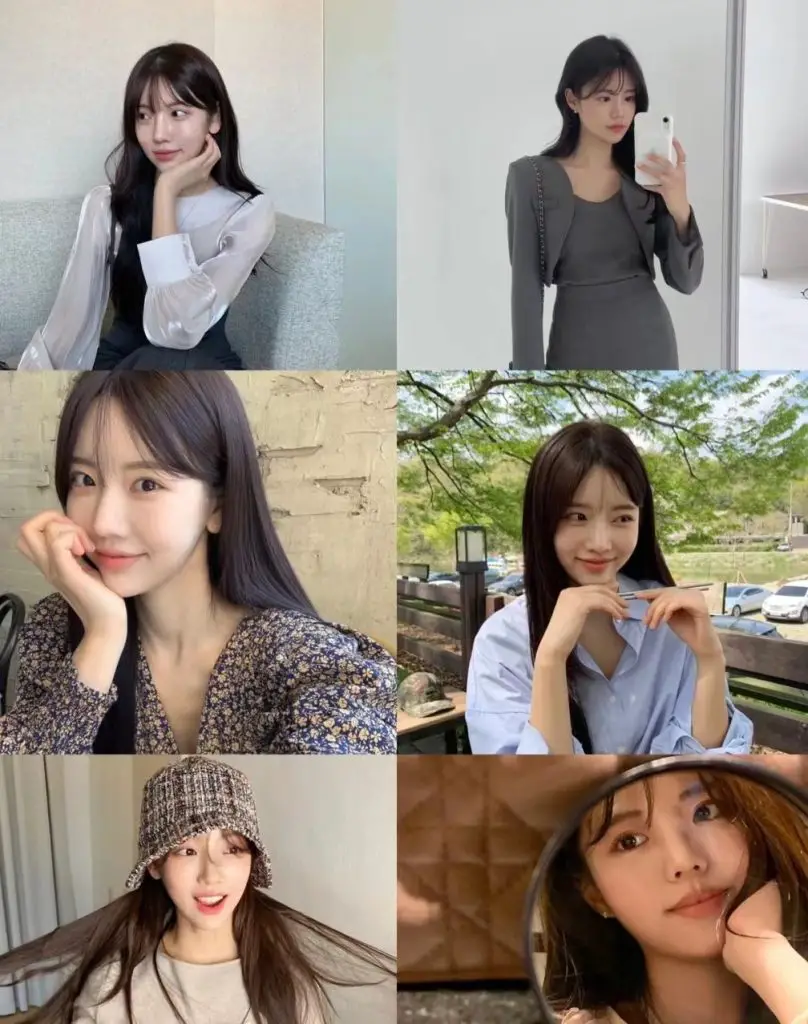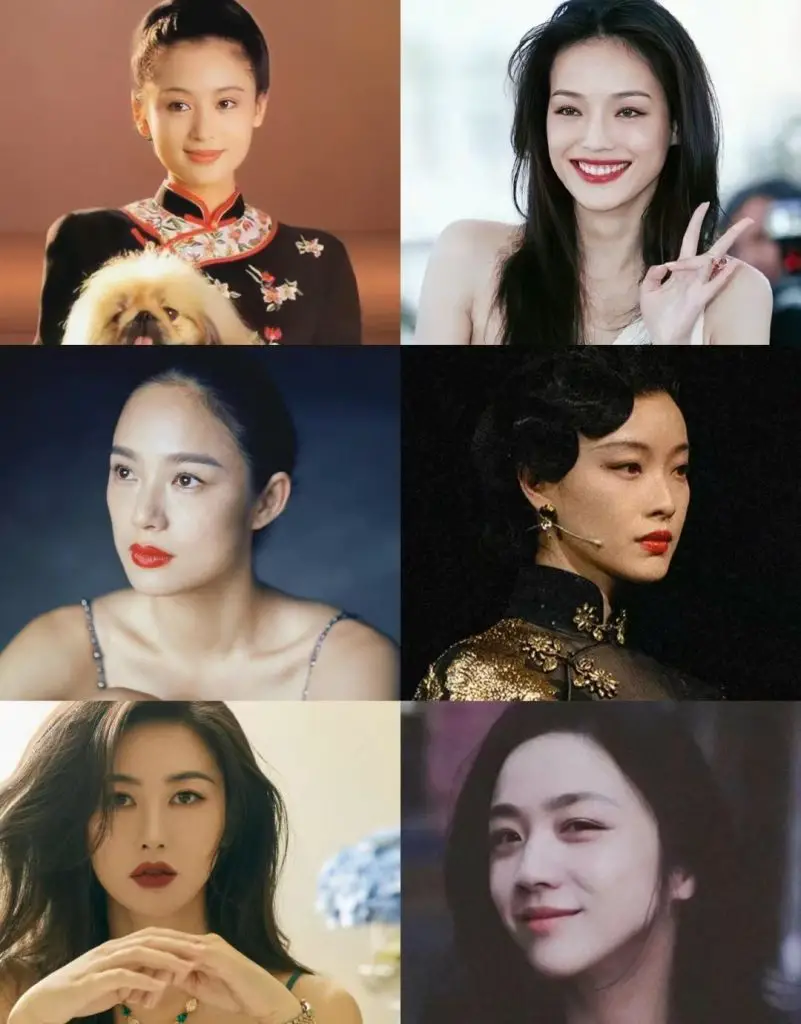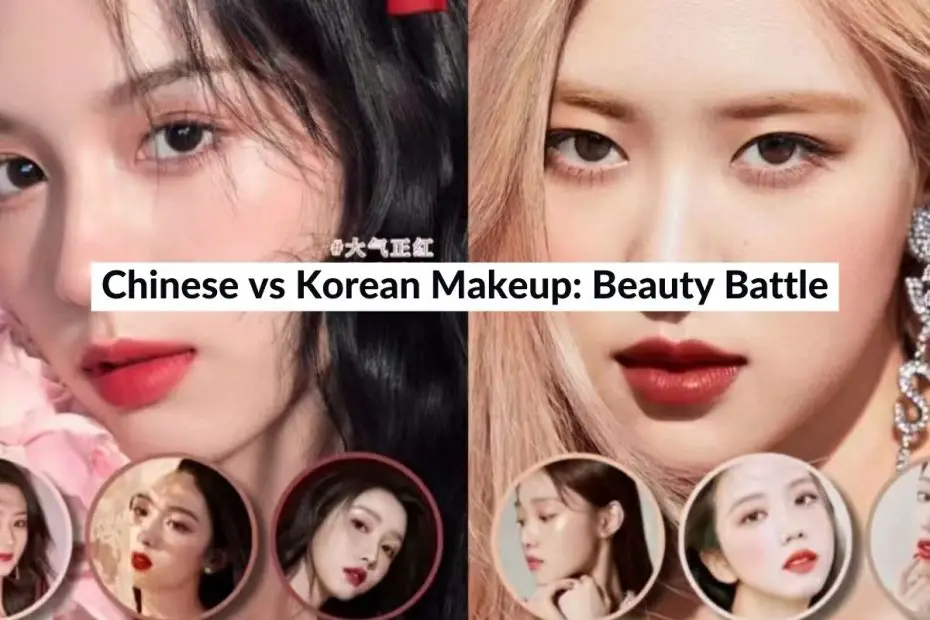K-Beauty has undoubtedly captured the global beauty industry with its innovative skincare products and unique makeup trends.
However, amidst the K-Beauty craze, a rising star is emerging – C Beauty.
Thanks to the influence of Chinese TikTok, C Beauty is rapidly gaining recognition and popularity worldwide.
In this article, we will delve into the fascinating world of C Beauty and explore the style and trend differences between these two beauty cultures.
Join me and Get ready to discover the latest trends and insights from the dynamic world of Chinese beauty 😍
What is the Difference between Chinese Makeup and Korean Makeup?

Similarities:
- Both Chinese and Korean makeup trends focus on achieving a flawless and even complexion as a base for their looks.
- Both cultures emphasize the importance of skincare and achieving healthy, radiant skin before applying makeup.
- Both Chinese and Korean makeup trends pay attention to eye makeup, although they may differ in specific techniques and colors used.
- Both Chinese and Korean makeup trends draw inspiration from popular influencers, celebrities, and beauty brands.
Differences:
- Color preferences: Korean makeup trends favor softer, pastel shades like ginger, peach, pink, and mauve, while Chinese makeup trends tend to lean towards shades of brown for the eyes and various reds or nude tones for the lips.
- Eye and brow makeup: Korean makeup trends prefer softer and lighter-colored eye and brow makeup, while Chinese makeup trends lean towards more defined, dark, and sharp eyes and brows.
- Complexion finish: Korean makeup trends favor dewy or soft matte complexions, while Chinese makeup trends tend towards hydrated matte or “pudding skin” finishes.
- Lip makeup: Korean makeup trends like blurred or blotted out gradiated lips in various textures, while Chinese makeup trends tend to prefer a defined and opaque lip, usually in matte or satin finishes.
- Blush and contour: Korean makeup trends enjoy soft but bright blush in nude beige, warm pink, peach, and lavender, while Chinese makeup tends to be more minimal on the blush and may have more definition in terms of contour and highlight.
- Overall style: Korean makeup tends to be softer, brighter, and have a sweet, girlish aesthetic, while Chinese makeup is more defined, elegant, and focuses on reds and browns.
What is the Difference Between Korean Makeup and Douyin Makeup?
What is Douyin Makeup? Full Explanation Here.
| Aspect | Korean Makeup | Douyin Makeup (Chinese TikTok Makeup) |
|---|---|---|
| Influences | K-pop idols and celebrities | Influencers and KOLs on Douyin platform |
| Color Preferences | Soft, pastel shades (ginger, peach, pink) | Wider range of colors, including bolder and brighter shades |
| Complexion Finish | Dewy or soft matte | Various finishes: hydrated matte, “glass skin,” etc. |
| Eye Makeup | Softer, lighter-colored, innocent looks | Wide range of styles, including more defined and dramatic techniques |
| Lip Makeup | Blurred or blotted out gradiated lips | Range of styles, often more defined and opaque lips |
| Overall Style | Soft, brighter, youthful aesthetic | Diverse and rapidly evolving trends influenced by KOLs |
| Cultural Influences | K-pop culture | Influences from Chinese beauty culture and social media trends |
Korean makeup is known for its soft, pastel shades, dewy or soft matte complexions, and focus on creating innocent and youthful looks. Influenced by K-pop idols, it reflects a softer, brighter, and more girlish aesthetic.
On the other hand, Douyin makeup, influenced by popular Chinese influencers on the Douyin platform, incorporates a wider range of colors, finishes, and eye makeup styles. It embraces diverse trends, often with bolder and brighter shades.
The lip makeup in Korean makeup trends leans towards blurred or blotted out gradiated lips, while Douyin makeup encompasses various lip styles, often with more defined and opaque finishes. Both styles have their own unique cultural influences and cater to different preferences within their respective communities.
Chinese vs Korean Beauty Standards
Korean Beauty:

- Makeup: Clean, minimalistic approach with a focus on natural-looking makeup.
- Skin: Emphasis on wet, dewy, and white skin. Skincare is prioritized for a flawless complexion.
- Eyebrows: Flat, slightly arched eyebrows are preferred, aiming for a more natural appearance.
- Overall Look: More “grown-up” and sophisticated makeup styles are favored.
- Facial Features: Double eyelids and small “v” faces (V-shaped jawlines) are considered desirable, often achieved through cosmetic surgery.
- Symmetry: Symmetrical facial features are highly valued.
Chinese Beauty:

- Facial Features: Preference for big eyes, small “cherry” lips, white skin, and a thin V-shaped face. Colored contacts may be used to enhance eye appearance.
- Makeup: Minimal makeup is common, with many girls relying on BB cream and/or color corrector. Microblading for eyebrows is popular.
- Skin: Hydrated, dewy skin is sought after, often achieved through skincare routines and facial masks.
- Cosmetic Surgery: Increasing popularity of cosmetic surgery in China, including procedures like rhinoplasty, chin shaving for a V-shaped face, and double eyelid surgery.
| Aspect | Similarities | Differences |
|---|---|---|
| Skin Tone | Preference for lighter skin tones | Shared preference for light skin tones, but Korean beauty standards tend to emphasize extremely pale skin |
| Body Image | Preference for slim bodies | Shared preference for slim bodies, but Korean beauty standards can be more extreme in terms of body image expectations |
| Eye Shape | Preference for bigger eyes | Both countries value bigger eyes, but Korean beauty standards often include a focus on double eyelid surgery and eye makeup to enhance size |
| Makeup Usage | High percentage of women wear makeup | More Korean women wear makeup daily compared to China, where the number of women who wear makeup daily is still a minority |
| Glasses | Wearing glasses considered less attractive in Korea | More Chinese women wear glasses compared to Korea, where wearing glasses is considered universally unattractive |
| Hairstyles | Fewer Korean women with short hair | More Chinese women with short hair like men |
| Fashion Choices | Korean women tend to wear feminine outfits | Chinese women have more varied fashion choices, including masculine outfits |
| Beauty Standards | Korea has stricter beauty standards | China has more flexibility in beauty standards due to its diverse ethnic groups |
The beauty standards in China and Korea share some similarities, such as a preference for light skin tones, slim bodies, and bigger eyes.
However, Korea’s beauty standards are generally stricter and more homogeneous due to its conformist culture and relatively homogeneous population. This can lead to a perception that Korean women look similar or require plastic surgery to conform to these standards.
On the other hand, China’s beauty standards are more diverse due to its multicultural and multiethnic society. Chinese beauty standards allow for more flexibility and variation in facial features and fashion choices.
It’s important to recognize that both standards have their own benefits and drawbacks, and diversity should be celebrated.
What is the Difference Between Chinese and Korean Appearance?
Chinese:
- Facial Features: Chinese individuals may have a variety of facial features due to the diverse ethnic groups within China. Common features include a wider range of eye shapes (monolid, double eyelid), diverse nose shapes, and various lip and mouth shapes.
- Skin Tone: Chinese individuals can have a range of skin tones, from fair to tan or olive.
- Face Shape: The face shape can also vary among Chinese individuals, with some having round faces, while others may have more oval or square-shaped faces.
- Hair: Hair types and styles can differ among Chinese individuals, ranging from straight to wavy or curly, with various colors and lengths.
- Style and Fashion: Chinese fashion trends can be diverse and influenced by both traditional and modern styles.
Korean:
- Facial Features: Koreans often have distinct features, including a preference for prominent and straight eyebrows, a focus on having double eyelids, and straight or slightly curved nose shapes.
- Skin Tone: Korean individuals typically have fair to light skin tones, although variations exist due to factors like sun exposure and regional differences.
- Face Shape: Koreans often have more oval-shaped faces, with softer jawlines.
- Hair: Straight and dark hair is common among Koreans, but there is also a growing trend of styling with perms or various hair colors.
- Style and Fashion: Korean fashion is known for its trendy and youthful aesthetics, with a focus on clean lines, innovative designs, and a mix of traditional and modern elements.
Frequently Asked Questions:
How does the color palette differ between Chinese and Korean makeup?
The color palette used in Chinese and Korean makeup differs in terms of intensity and application. Chinese makeup often incorporates bold and vibrant colors, especially for eye makeup and lip shades. Red, gold, and deep hues are commonly used to create a dramatic and glamorous look.
In contrast, Korean makeup tends to lean towards softer and more natural colors. The focus is on achieving a youthful and radiant appearance, using light pastel shades and earthy tones. Soft pinks, peaches, and neutrals are popular choices for Korean makeup looks.
Does Chinese or Korean makeup prioritize eye makeup more?
Both Chinese and Korean makeup prioritize eye makeup, but they do so in different ways. Chinese makeup often places a strong emphasis on eye makeup, with techniques like elaborate eyeliner designs, the use of false lashes, and eyeshadows in vibrant colors. The goal is to create captivating and expressive eyes that draw attention.
Korean makeup also values eye makeup but tends to focus on enhancing natural eye shapes rather than creating dramatic effects. Soft eyeshadow gradients, subtle eyeliner application, and curled lashes are commonly used in Korean makeup to create bright and youthful-looking eyes.



Your posts have been extremely helpful to me. Thank you!